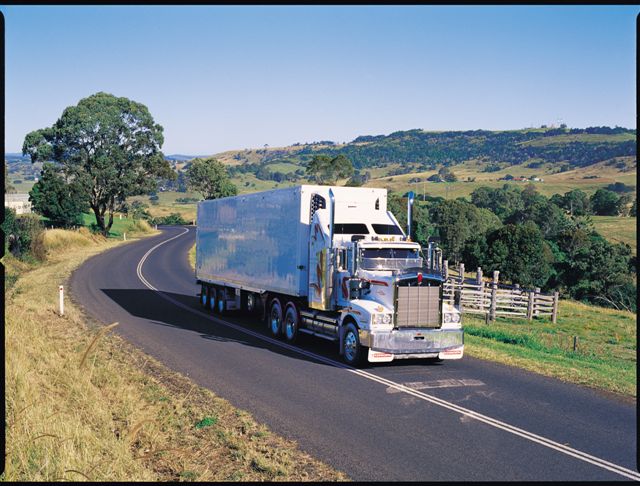Submission Details
Submitted to: National Transport Commission
Date submitted: 9 November 2020
Summary: This is an initial NatRoad submission to the NTC in its review of a document Assessing Fitness to Drive (AFTD) that is a pivotal element of driver fitness assessment.
Submission document: Click Here.
Introduction
1. The National Road Transport Association (NatRoad) is pleased to respond to the National Transport Commission (NTC) invitation to have input into the NTC’s review of the guidelines contained in the publication Assessing Fitness to Drive1 (AFTD).
2. NatRoad is Australia’s largest national representative road freight transport operators’ association. NatRoad represents road freight operators, from owner-drivers to large fleet operators, general freight, road trains, livestock, tippers, car carriers, as well as tankers and refrigerated freight operators.
3. This submission responds to the invitation but we regret that most of the comments we make are “out of scope.” AFTD establishes the medical standards that inform driver licensing. NTC has informed us that the purpose of the review is to ensure that “these standards represent best-practice, are up to date and meet the needs of users”. 2 There will be a subsequent consultation round where stakeholders will be able to provide input following the NTC doing further work with a medical specialist and an advisory group. NatRoad looks forward to participating in the consultation round. Yet the notion of “meeting the needs of users” brings into account the problematic fact that whilst AFTD doesn’t stand as a fitness for duty standard in practice it is often used for that purpose.
Intersection with the HVNL Review
4. The current review of the Heavy Vehicle National Law (HVNL) involves a consideration of a driver fitness for duty standard being placed in a revised law.
5. During the course of the HVNL review, NatRoad has proposed that all commercial heavy vehicle drivers should have regular medicals against upgraded fitness for duty standards, subject to other criteria being introduced into a revised HVNL. This omission from the current law was indicated in the relevant Issues Paper in the earlier stages of the current Heavy Vehicle National Law Review:
“(T)he HVNL doesn’t include a set of fitness for duty standards. This is left to state and territory licensing processes, which use the assessing fitness to drive (AFTD) guidelines to assess driver health. The AFTD guidelines are not specific to heavy vehicles, are limited to the driving tasks, and are not intended for use for regular health checks.”3
6. The latter sentence captures all of the matters that should either be improved and changed within the AFTD or separated out and new guidelines which specifically address these issues devised.
7. The problem with the oft used AFTD for fitness for duty issues is epitomised in relation to increased current concern about driver mental health. Because of the impact of COVID-19, management of worker mental health is an extremely important issue and should be considered under any revised “fitness to drive” document, which ideally should be a standalone document for commercial drivers. This is because of the reliance in the AFTD on “evaluation of the specific pattern of illness and potential impairments as well as severity, rather than the diagnosis per se.”4 That difference epitomises the purpose of AFTD when compared with a fitness for duty standard. In addition, mental health assessments must be given greater attention in the current environment so that employers are better able to assist employee’s manage this vital component of their health.
8. The approach outlined here would appear to be out of scope for the current review of AFTD but should influence the AFTD review to the extent that it should trigger a separate NTC body of work associated with changes to fitness to drive presaged by the HVNL CRIS.5 We note and agree with the following observation about a relevant deficiency in the HVNL:
Risks relating to driver competency and fitness for work are not specifically called out, meaning that some parties may not direct attention/resources to managing these risks. It also worth noting that while state and territory licensing arrangements mandate minimum competencies and medical fitness to drive standards, these mechanisms are not suited to managing competency and fitness to drive on an ongoing basis.6
9. Despite that observation, the HVNL CRIS proposes Option 8.6 where the HVNL would contain:
- A heavy vehicle driver national health assessment standard. This will apply a commercial Fitness to Drive medical standard under the Australian Assessing Fitness to Drive (AFTD) guidelines, and the sleep disorder assessment and management standard used in the Rail Safety Worker National Standard for Health Assessment.
- A requirement for all heavy vehicle drivers to undertake periodic and triggered health assessments against this standard and demonstrated (sic) that they have been assessed and this assessment remains current.7
10. This seems at odds with the earlier conclusion although the CRIS does say:
The AFTD guidelines set out risk factors for blackouts, cardiovascular conditions, diabetes mellitus, loss of hearing and deafness, musculoskeletal, neurological, psychiatric, sleep, substance misuse and vision and eye conditions. These risks may trigger the need for more regular health assessments.8
11. Given the seeming confusion in the CRIS about the intent of the AFTD and its use as a guide to risk factors in the areas flagged, it seems clear that the NTC should consider having a separate project underway that clearly distinguishes a fitness for duty standard from the AFTD. We believe that this issue is further compounded by the Western Australian medical assessment being based on AFTD.9 Indeed, in the absence of fitness for duty standards, NatRoad advises members that they should seek for medical assessments of drivers to be based on AFTD. We have noticed a marked lack of knowledge amongst general practitioners in particular about the AFTD.
Risk Identification Inadequancies
12. During the course of the previous review into the AFTD, NatRoad as a member of the Australian Trucking Association (ATA), endorsed ATA’s identification of areas of medical risk not adequately covered in the AFTD. These fall into three areas of sleep apnoea, diabetes and cardiovascular disease thus:
- AFTD does not deal adequately with sleep apnoea, because it relies on the Epworth Sleepiness Scale (ESS): a subjective index of sleepiness. Peer reviewed research conducted from 2008 to 2011 found that 41 per cent of Australian long-distance commercial drivers had obstructive sleep apnoea, but only 12.2 per cent recorded a positive (>10) score when they filled in the ESS.
- In 2008, the Queensland Centre for Medical Health Research found that some 6.3 per cent of truck drivers had type 2 diabetes, compared to the Australian norm of 3.1 per cent. Despite this finding, the urine glucose test for diabetes was removed in the 2012 edition of AFTD ‒ it was medically deprecated ‒ but not replaced with an updated test.
- Cardiovascular disease is a most significant issue for the trucking industry. In 2013, Elkington and Stevenson concluded that 37.3 per cent of the drivers who participated in their major study of long-distance commercial drivers were overweight; a further 47.2 per cent were obese. Despite this, the AFTD medical exam does not include routine screening for cardiac risk factors.10
13. These issues should be reconsidered in the revised version of the AFTD. We have been advised by an expert in workers compensation from NatRoad partner AEI Transport that the issue of cardiovascular disease remains current and remains highly problematic. This is compounded by the fact that medical practitioners do not appear to be advising employers of potentially high risk medical factors and are unaware of the linkages between diagnoses and the retention of a heavy vehicle licence. The example provided by AEI was of a worker having cardiac arrest at work where two weeks prior he was diagnosed with a heart condition but no flow of information occurred from him or his medical practitioner. If he had been driving at the time the consequences could have been catastrophic.
14. Consideration should be given to applying the assessment process and detailed requirements in the rail industry regarding the management of cardiovascular factors.11 This proposition reinforces the need to have separate fitness to drive standards as well as the AFTD in place.
15. In discussions with AEI, it was also isolated that the basic conditions required for a heavy vehicle driver to operate safely and the minimum requirements of that function are not well understood by medical practitioners. It might be of utility therefore for a pro forma heavy vehicle job description to form part of AFTD so that the nature of the environment and the physical demands of the driving role could be captured in a helpful way. NatRoad and AEI have both identified circumstances where there is a gap between the reality of driving and the medical practitioner’s assessment of what be involved, particularly where substance abuse has been detected. AEI raised the issue of a medical practitioner who had referred the patient/driver to a substance abuse clinic because of frequent detected drug use. But the medical practitioner in a pre-employment assessment indicated that the patient was fit to drive a heavy vehicle. NatRoad finds that extraordinary.
Conclusion
16. NatRoad considers the issues raised by the current project to be timely and beneficial of resolution. We will be pleased to assist further in the next consultation phase.
Footnotes
1https://austroads.com.au/publications/assessing-fitness-to-drive/ap-g56
2Email from NTC 17/9/20
3NTC Issues Paper p 26 https://www.ntc.gov.au/sites/default/files/assets/files/NTC_Issues_Paper__Safe_people_and_practices.pdf
4Above note 1 at p107
5https://www.ntc.gov.au/sites/default/files/assets/files/HVNLR-consultation-RIS.pdf
6Id at p40
7Id at p107
8Id at p108 NatRoad emphasis
9https://www.transport.wa.gov.au/mediaFiles/licensing/LBU_F_DL_M106A_MedicalAssesstInst.pdf
10 Summarised in the ATA submission to the Productivity Commission on its draft National Transport Regulation report at p 5 https://www.pc.gov.au/__data/assets/pdf_file/0005/250772/subdr076-transport.pdf
11 https://www.ntc.gov.au/sites/default/files/assets/files/National-Standard-for-Health-Assessment-of-RailSafety-Workers-2017.pdf at p30 in particular



